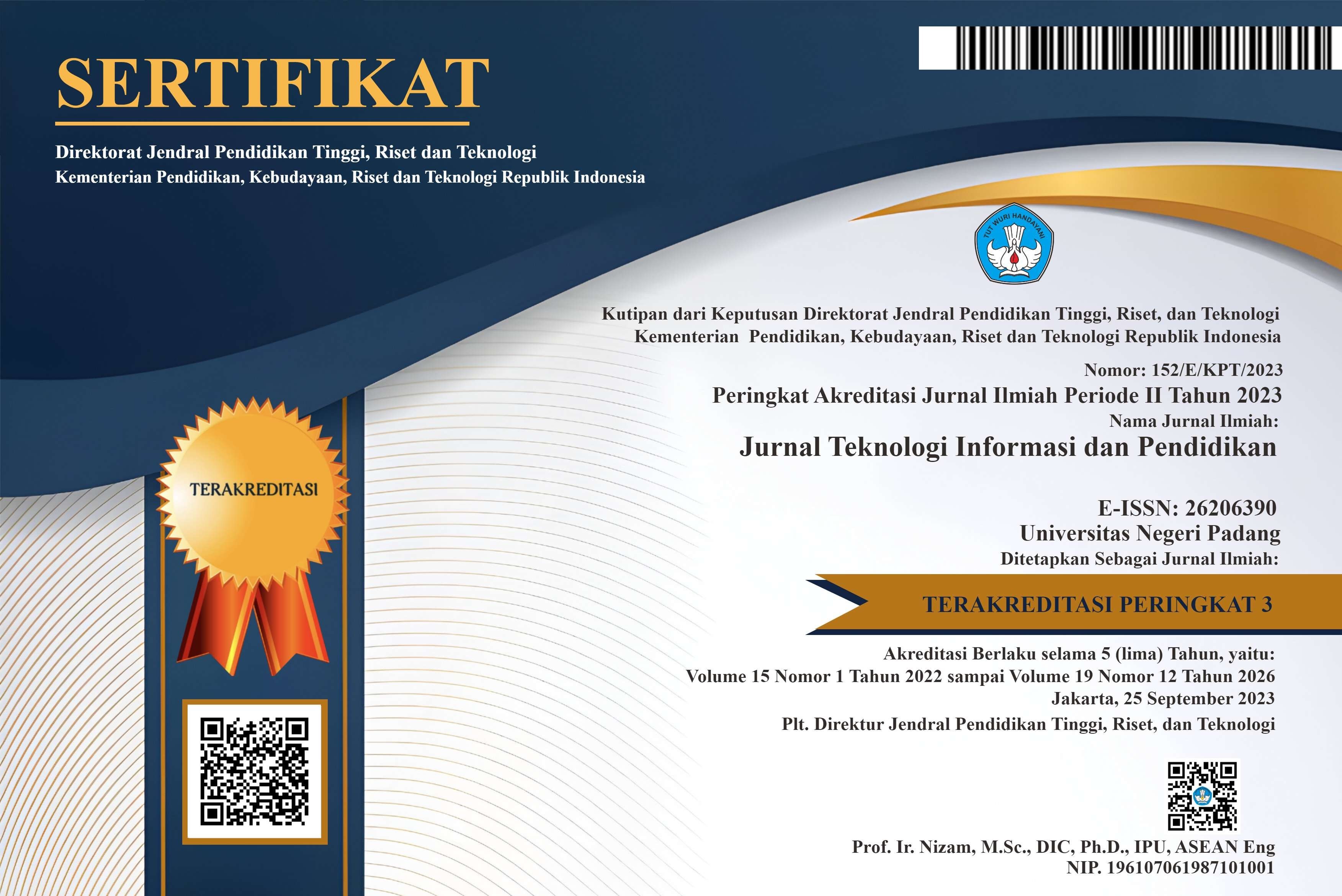Analysis of User Acceptance Using UTAUT2 Model in KAI Access Application
Abstract
The convenience provided by mobile applications provides substantial opportunities for companies, especially those engaged in the service sector to improve performance and service to customers and get the best feedback as the value of the company's competitive advantage. This study aims to determine the factors that influence behavioral intention and use behavior in the KAI Access application using the UTAUT2 model for users of the KAI Access application. The variables used in this study are performance expectancy, effort expectancy, social influence, facilitating conditions, hedonic motivation, price value, habit, behavioral intention, and use behavior. The number of respondents who can be used for data analysis and processing in this study was 257 respondents, with details of 27 offline respondents and 230 online respondents. The data was obtained from the distribution of google forms through various social media and the distribution of questionnaires directly at the Kertapati Palembang train station. The research method uses quantitative methods and analytical techniques using validity and reliability tests with Rasch Modeling, Path Analysis, Classical Assumption Test, Anova Test, and Partial Test. The results of the study concluded that performance expectancy, facilitating conditions, hedonic motivation, price value, and habit affect the behavioral intention and use behavior of the KAI Access application. The most influential/significant variables are facilitating conditions, hedonic motivation, price value, and habit.
References
A. A. Taiwo and A.G. Downe, “The Theory of User Acceptance and Use of Technology (UTAUT): A Meta-analytic Review of Empirical Findings,” Jo. Of Theo. And App. IT, vol. 49, no. 1, pp. 48-58 Jan. 2013, doi: www.jatit.org/volumes/Vol49No1/7Vol49No1.pdf.
A. Andrianto, “Faktor yang Memengaruhi Behavioral Intention untuk Penggunaan Aplikasi Dompet Digital Menggunakan Model UTAUT2,” Bus. Eco. Jo., vol. 25, no. 2, Aug. 2020, doi: http://dx.doi.org/10.35760/eb.2020.v25i2.2412.
A. B. Ramdhani, “Pengaruh Adopsi Teknologi Layanan Uang Elektronik Telkomsel Cash Menggunakan Pendekatan UTAUT2,” Mgt. E-Proced., vol. 4, no. 1, pp. 53-60 Apr. 2017.
A. Kuan Lai Kit, “UTAUT2 Influencing the Behavioural Intention to Adopt Mobile Applications,” B.E. thesis, Dept. Bus. And Fin., Tungku Abdul Rahman Univ., Kampar, Perak, Malaysia, 2014. ¬¬¬
A. Ispriandina and M. Sutisna, “Faktor-Faktor Penerimaan Teknologi Yang Memengaruhi Intensi Kontinuitas Penggunaan Mobile Wallet Di Kota Bandung,” IT Jo., vol. 10, no. 1 pp. 1046-1055 Jul. 2019, doi: https://doi.org/10.35313/irwns.v10i1.1462.
A. Septriani, “Analisis Faktor-Faktor yang Memengaruhi Use Behavior Gopay dengan Behavioral Intention sebagai Variabel Interving,” B.Ed. thesis, Dept. Eco., Semarang Univ., Semarang, Jawa Tengah, Indonesia, 2020.
A. Zeyad and M. Awni, “Mobile E-Ticketing Reservation System for Amman International Stadium in Jordan,” Jo. of Proj. Mgt. , vol. 10, no. 3 pp. 138-144 Jan. 2011, doi: www.ijar.lit.az.
C.A. Haris and A. Nasiri, “Penerapan Model UTAUT2 Untuk Mengevaluasi Aplikasi Ruang Guru,” IT Jo., vol. 3, no. 2 pp. 192 Dec. 2019, doi: https://doi.org/10.36294/jurti.v3i2.1085.
C.S. Yu, “Factors Affecting Individuals to Adopt Mobile Banking: Empirical Evidence from the UTAUT Model,” Jo. of Elec. Com. Res., vol. 13, no. 2 pp. 105-121 May. 2019, doi: http://www.jecr.org/node/48.
G. Baptista and T. Oliveira, “Understanding Mobile Banking: The Unified Theory of Acceptance and Use of Technology Combined with Cultural Moderators,” com. in hum. Behv., vol. 50, pp. 418-430 Sep. 2015, doi: https://doi.org/10.1016/j.chb.2015.04.024.
G. Putra and M. Ariyanti, “Pengaruh Faktor-Faktor Dalam Modified Unified Theory of Acceptance and Use of Technology 2 (UTAUT2) Terhadap Niat Prospective Users Untuk Mengadopsi Home Digital Services PT Telkom Di Surabaya,” ind. Mgt. jou., vol. 14, no. 1 pp. 59 Mar. 2017, doi: https://doi.org/10.25124/jmi.v14i1.352.
M. Nasir, “Evaluasi Penerimaan Teknologi Informasi Mahasiswa di Palembang Menggunakan Model UTAUT,” SNATI, vol. 1, no. 1 pp. 15 Jun. 2013.
N. Diana, “Analisis Faktor-Faktor yang Memengaruhi Minat Penggunaan Electronic Money di Indonesia,” B.E. thesis, Dept. Eco., Indonesia Islamic Univ., Yogyakarta, DIY, Indonesia, 2018.
V. Venkatesh, “Consumer Acceptance and Use of Information Technology,” MIS Quarterly, vol. 36, no. 1 pp. 157-178 Mar. 2012, doi: https://doi.org/10.2307/41410412.
Y.O.L. Rema and D.B. Setyohadi, “Faktor-faktor yang Mempengaruhi Penerimaan Mobile Banking Studi Kasus : BRI Cabang Bajawa,” SRTI, vol. 1, no. 1 pp. 114-122, 2016
Copyright (c) 2023 Jurnal Teknologi Informasi dan Pendidikan

This work is licensed under a Creative Commons Attribution-ShareAlike 4.0 International License.















.png)














